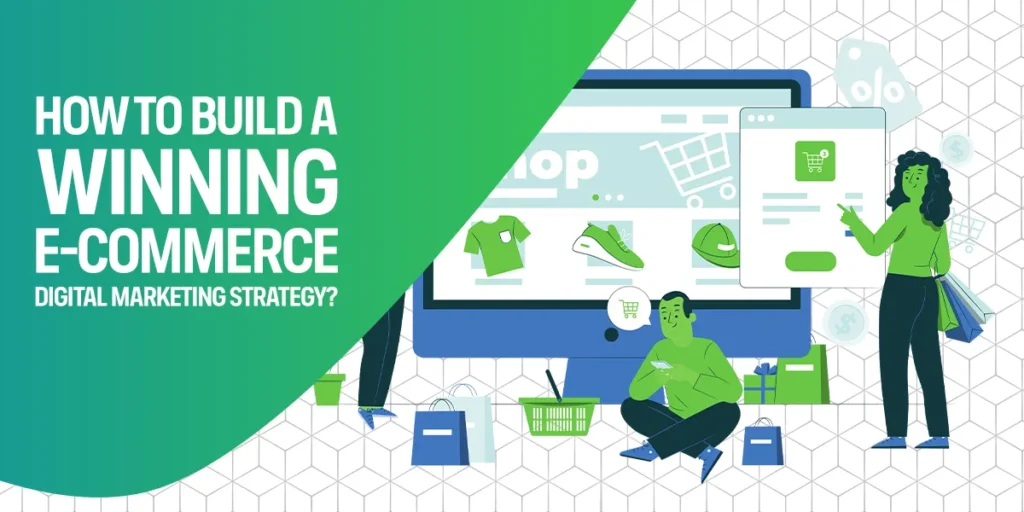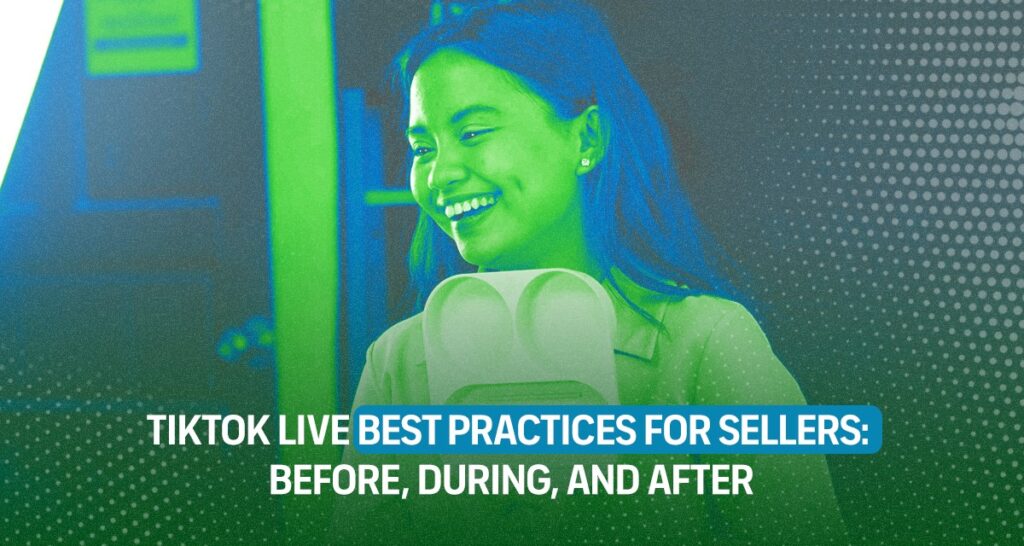In 2022, the Department of Trade and Industry (DTI) reported approximately 2 million sellers in the Philippines. This number was just an estimate but it highlighted how crowded already is the e-commerce landscape in the country. This is why having an effective digital marketing strategy for an e-commerce business is a must to stay ahead of the competition.
Consumer behavior in the Philippines is also evolving. Insights from Google and Kantar perform six to seven searches before making a purchase. Furthermore, a Google study highlighted a significant 195% increase in searches for comparisons such as “which one is better,” to learn more about the brand.
Just imagine your potential customer trying to search for your product online but can’t find anything online. You’re losing a valuable opportunity day by day.
Don’t have an e-commerce marketing strategy? Don’t worry, we created this article to help you build a digital marketing strategy that drives sales and grows your e-commerce store.
We’ll break down the process into easy-to-follow steps, explore essential marketing channels, and delve into the power of data-driven optimization.
Step-by-Step Guide to Creating a Digital Marketing Strategy for E-commerce

Creating a successful digital marketing strategy isn’t a one-time fix. It’s an ongoing process that requires careful planning, execution, and continuous improvement. The following are the steps you need to cover to build a successful e-commerce digital marketing strategy.
Step 1: Identify and Find Your Audience
Before you create your e-commerce marketing strategy, make sure to get to know your ideal customers. You can start by identifying their demographics like age gender, location, and income.
But you should not stop with this basic information. Try to gain a deeper understanding of your ideal customer. One way to do this is by creating a buyer persona.
A buyer persona is a research-based profile that describes your customer. In creating a buyer persona, you go beyond the demographics. Here, you also discuss their current situation, goals, challenges and pain points, and media consumption.
Let us give you an example. Let’s say you’re an e-commerce store that sells minimalist household items. Here you can have the following buyer persona:

Description: Sam is a middle-aged woman from the province who is now renting an apartment in Manila. She is looking for space-saving furniture to clear up her clutter. She likes a minimalist lifestyle.
- Age: 30
- Gender: Female
- Location: Sta. Mesa Manila
- Education: Bachelor’s Degree
- Job Title: WFH Freelancer
- Income: 25,000-35,0000
- To Create a calm and clutter-free living environment that promotes focus and well-being.
- To Own high-quality, but affordable multiple items.
- LTo have a clean aesthetic room that complements her minimalist lifestyle.
- She’s living in a small apartment.
- Feels overwhelmed by clutter and constantly battles the urge to accumulate stuff.
- She struggles to find household items that are both functional and aesthetically pleasing.
- Follows minimalist influencers and blogs on social media. (Facebook and Instagram).
- Reads design and lifestyle publications online.
- Watches YouTube videos showcasing minimalist home organization tips.
As you can see in our example above, you can easily understand Sam’s motivations and needs. From here, you can create a targeted strategy that would resonate with customers like her. For example, you can partner with minimalist influencers and bloggers for product reviews and sponsored con
Step 2: Define Your Marketing Goal
Before diving into your marketing efforts, it’s essential to set clear and achievable goals. These goals should be SMART: Specific, Measurable, Achievable, Relevant, and Time-bound.
Be clear about what you want to achieve. Do you aim to increase website traffic, generate qualified leads, or boost online sales?
Having a SMART goal in place allows you to create a more targeted campaign. Once you have a specific objective, you then can pinpoint the metrics that matter most to track your progress and analyze your marketing performance.
For example, your goal is to increase your sales of your online store by 20% in six months. Here, you need to check metrics such as total sales revenue, conversion rate, and average order value.
Step 3: Conduct a Competitive Analysis
In the competitive world of e-commerce, staying one step ahead requires knowing who you’re up against. That’s why you should never skip creating a competitive analysis.
A competitive analysis It’s the strategic process of gathering information about your competitors, and those other businesses vying for the same customers in your industry.
In conducting a competitive analysis make sure to cover factors such as the product feature, pricing, target audience, marketing strategies, strengths, and weaknesses.
Keep in mind that, the right competitive analysis goes beyond just browsing your competitor’s website. You need to understand their product offerings, pricing strategy, target audience, marketing initiatives, strengths, and weaknesses.
By creating a thorough competitor analysis, you can gain a deeper understanding of the market landscape and make informed decisions that strengthen your position in the industry.
Step 4: Choose the Right Digital Marketing Channels
Since you already identified your target market and your marketing goal, selecting the Right Digital Marketing Channels is now a lot easier.
To help you further, the following are the most relevant channels you can use to market your e-commerce site:
- Search Engine Optimization: E-commerce SEO is the foundation of your online presence. Strong SEO gets your website seen by potential customers searching for what you offer, driving organic traffic and boosting credibility.
- Social Media Marketing: Here, you engage with your audience on social platforms like Facebook, Instagram, TikTok, and more. Here, you need to create a creative form of content to interact with followers, build brand awareness, and drive traffic to your website.
- E-mail Marketing: This is a powerful tool for nurturing leads and retaining customers. Build an email list to educate customers, share promotions, and drive sales.
- PPC Advertising: This advertising model allows you to display targeted ads on search engines and other websites. You only pay when someone clicks on your ad, making it a cost-effective marketing strategy.
Step 5: Develop a Content Strategy
Now let’s move to the critical part: creating your actual content. Did you know? Hubspot research found that 50% of marketers plan on increasing their investment in content marketing in 2024.
Content marketing, though, comes in different forms. It can be a blog, image, video, or even a contest on social media. Whatever format you choose, just remember that Quality is the King.
Your content should be aligned with your goals, resonate with your target audience, and provide genuine value. By creating high-quality content consistently, you’ll attract, engage, and convert potential customers.
Step 6: Implement and Monitor your E-commerce Strategy
Your e-commerce marketing strategy doesn’t end after the launch of your campaign. Use analytics tools to track and identify its performance.
See which pages on your website are attracting the most visitors. Discover which campaigns are generating the most leads. Identify emails with the highest open rates. Use the insights you have gained from your analysis to refine your marketing strategies.
The Power of Data in E-commerce Marketing

Did you know? A Google Study finds that 90% of leading marketers attest that personalization significantly contributes to business profitability. But what do you need to create this personalized approach? The answer lies in data analytics.
In e-commerce marketing, data analytics is the practice of gathering and analyzing data to gain insight into your company’s digital marketing strategies. These data can come from different sources and each one can give you important information.
So, where do you get this valuable data from?
It’s all around us, in every digital interaction. For example, email marketing data can shed light on subscriber preferences, revealing what content resonates with your audience. Social media data, on the other hand, offers a window into engagement patterns. These data help you pinpoint what captures your audience’s attention. Then there’s web analytics that can help you identify the behavior of your visitors on your e-commerce page, where they came from, and how they found your site.
With data analytics, you can eliminate the guesswork. It lets you understand your customer’s entire buying cycle and optimize your e-commerce strategies. Moreover, data analytics plays a crucial role in A/B testing. This allows you to compare different marketing strategies and choose the one that delivers the best results.
In e-commerce marketing, data analytics not only enhances decision-making but also significantly boosts efficiency and marketing ROI.
Let's Talk E-commerce Marketing!
Crafting a winning e-commerce marketing can be overwhelming. Creating content, optimizing campaigns, analyzing data – it’s a lot to manage if you’re alone! The good news is that you don’t need to experience these complexities anymore.
Be Global E-commerce Corporation has an entire team of digital marketing strategists ready to help you build a winning e-commerce strategy that converts. Need captivating content? Check. Strategic branding? Done. Powerful PPC advertising? We’ve got you covered.
Want a team of experts to handle your marketing? Contact us today!





